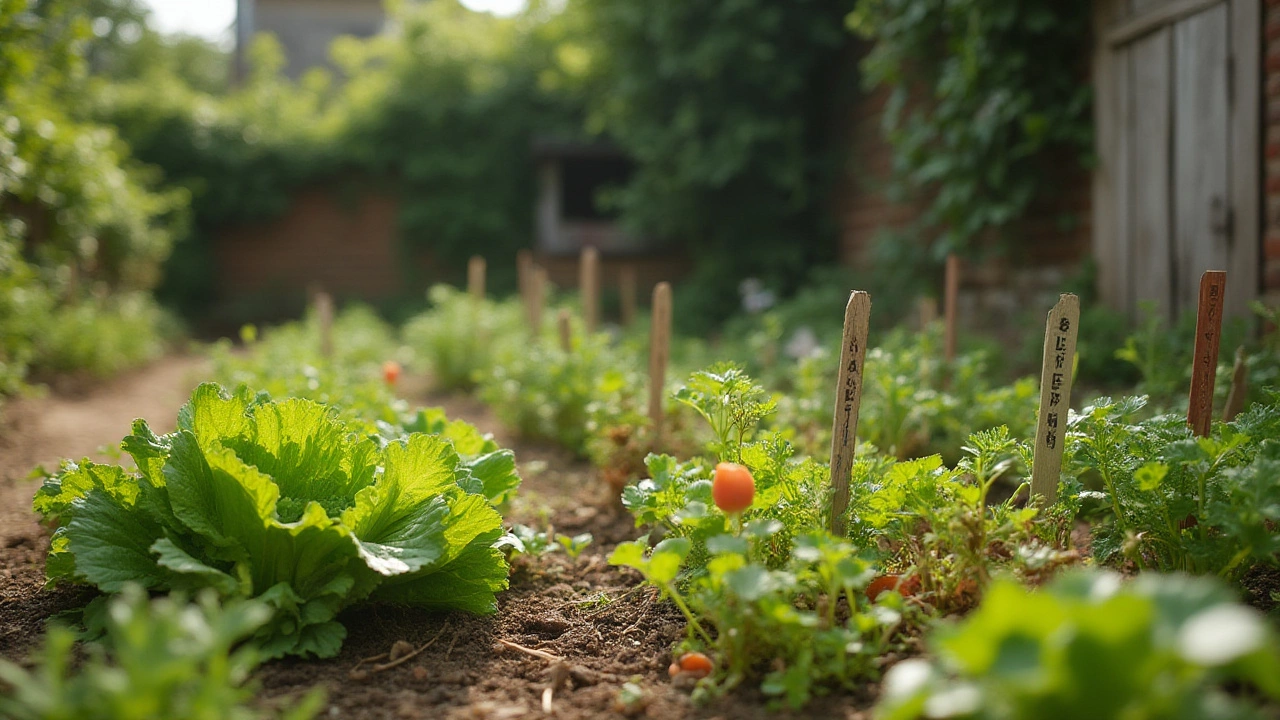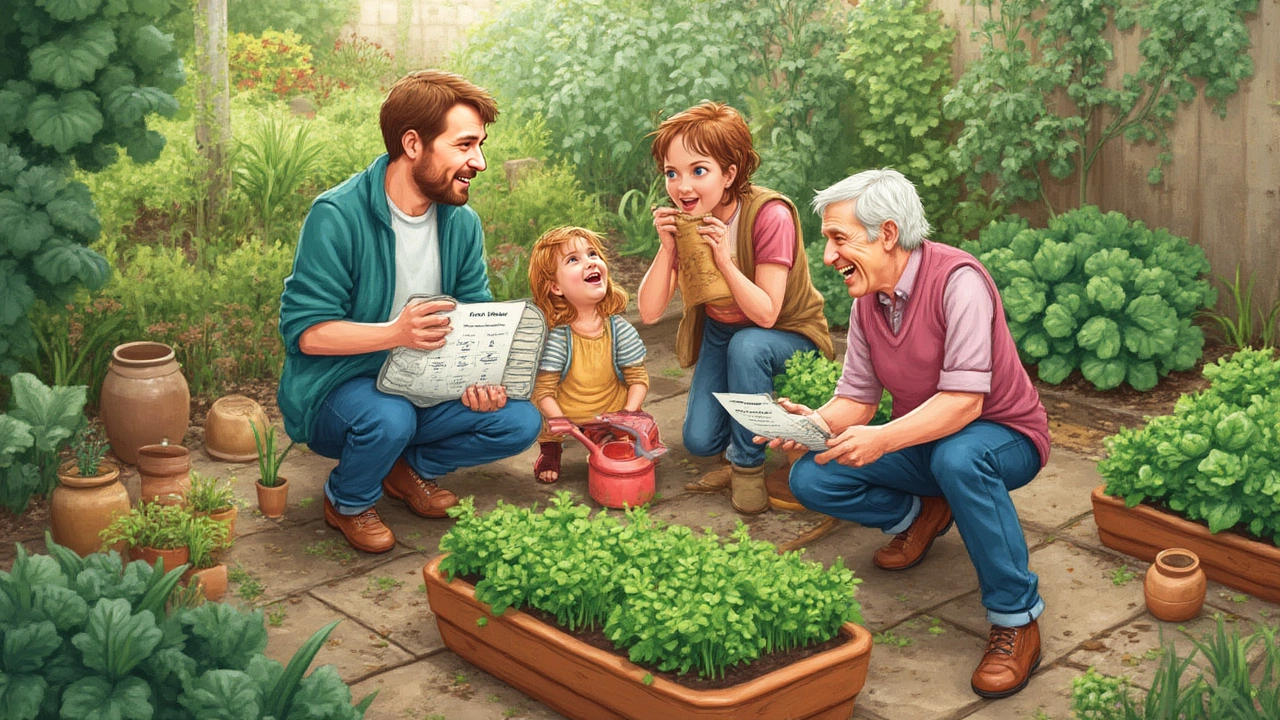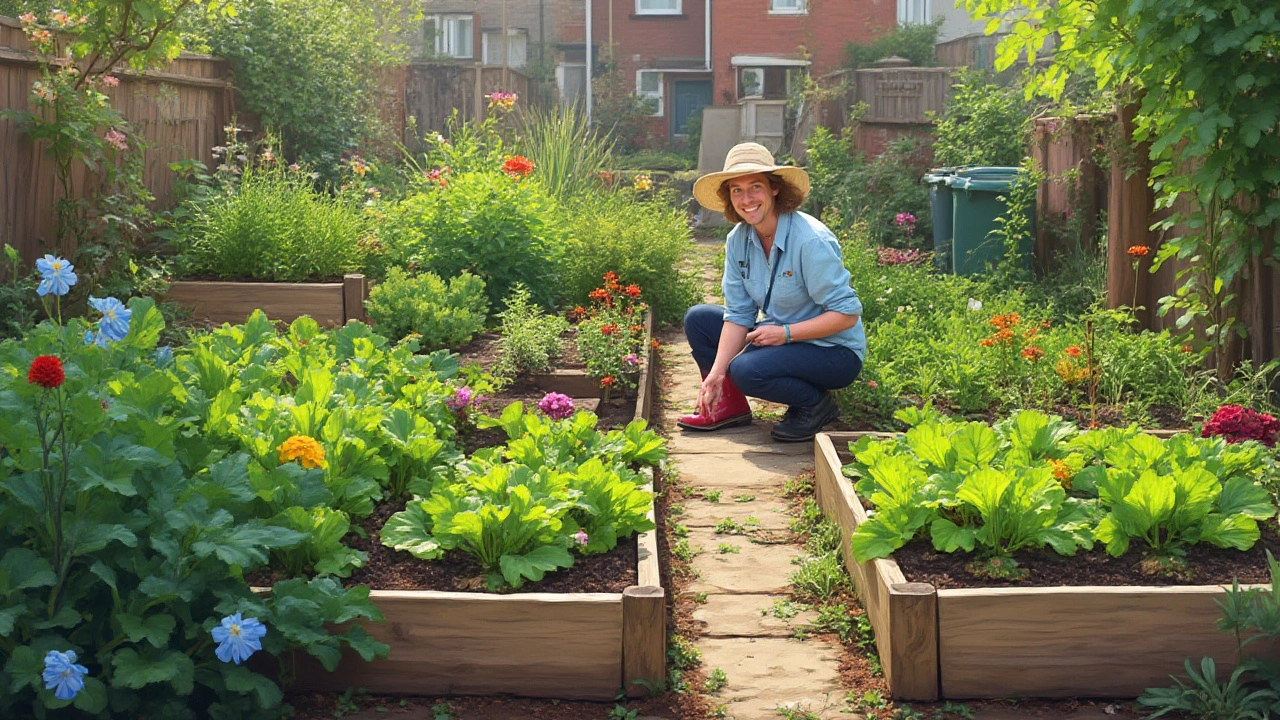Ever feel like your little veggie patch just isn’t pulling its weight? It’s not about needing more space; it’s about using that space smarter. The answer is succession planting—a classic gardener’s hack that keeps your beds busy and bursting with fresh food, long after your neighbor’s patch is sitting empty. Ready to squeeze every last tomato, bean, and carrot out of your tiny plot?
Why Succession Planting Changes the Game in Small Gardens
When you look at most home gardens, you’ll see empty soil after a harvest, just sitting there waiting. That gap? It’s wasted potential. Succession planting flips this whole picture around. Instead of planting everything at once and watching your garden run out of steam by early winter, you stagger what you grow and when you plant it. The result: fresh crops keep replacing old ones, and you’re pulling produce almost non-stop.
This isn’t just guesswork—actual studies from the Royal Horticultural Society in the UK found that gardens using succession planting techniques produced up to 40% more vegetables than those with just one big spring planting. It makes sense. In Durban, where our winters are mild and the rains are generous, there’s no real reason to let the soil sit idle. Even in places with short seasons, a bit of smart planning can turn a modest piece of land into a mini-supermarket.
The magic of succession planting is that you use every gap. After you pull your last lettuce, you’ve already got beetroot seedlings ready to go. That spot where pod peas finished in early spring? Fill it with bush beans. So, instead of thinking about gardening as a one-and-done deal, you see it as an endlessly regenerating cycle. Your garden becomes a conveyor belt, not a one-time show.
Plus, keeping roots in the soil helps stop weeds, prevent soil erosion, and feed the life under your ground. Every season isn’t just about harvest; it’s about feeding the soil itself.
Planning Your Succession Planting Layout
If you want to keep your garden productive, you need a basic roadmap. This strategy requires just a touch of planning, but honestly, nothing overly complicated. First, make a list of your favorite veggies—and count how many days they take to mature. Some, like radishes, are speedsters, ready in just three to four weeks. Others, like carrots or tomatoes, need a bit more patience.
Now, get real about your space. A four-square-meter patch can look tiny but, with careful timing, provide greens for months. Sketch a simple layout showing bed sections and jot down what crops will start where, and when. Leave a few blocks open in your plan so you’ve got flexibility to pop something in after an early harvest.
Certain crops love to follow each other. For example, lettuce loves cool, early spring. As temperatures rise, it bolts and turns bitter. That’s your prompt to replace it with young basil, which thrives in summer heat. Or, after harvesting spring spinach, fill the gap with a fast-growing dwarf green bean. By late season, plant bush peas or Asian greens that bounce back in the cool autumn weather. Mixing root crops, leafy veggies, and fruiting plants keeps soil nutrients balanced too.
Durban’s weather helps, but each area is different. Tools like the Moon Phase Planting Calendar from SANBI (South African National Biodiversity Institute) can give you a head start. Don’t forget to overlap—start the new crop’s seedlings in trays, so by the time you pull the old crop, the new one goes straight in.

Perfect Crop Combos for Continuous Harvests
So what pairs make succession planting simple and satisfying? Here’s where things get interesting. Think of crops as relay race runners—one hands off the baton just as another is ready to zoom.
- Radishes > Carrots > Leafy Greens: Radishes are quick. Plant with slow-sprouting carrots beneath them—harvest radishes after three weeks, let carrots grow on, and when carrots are done, slip in baby spinach for autumn.
- Lettuce > Bush Beans > Pak Choi: Harvest lettuce, then sow direct bush bean seed. Beans fix nitrogen, enriching the soil for the leafy pak choi that follows as cooler weather returns.
- Spring Onions > Beetroot > Coriander: Onions go in early; harvest young, clear space for juicy beets, and after those, sprinkle fresh coriander seed which loves the gentle end-of-season sun.
- Peas > Cucumbers > Kale: Plant peas in early spring. When they finish (and the weather heats), let baby cucumber plants take over. Come autumn, plant kale in that rich soil left by nitrogen-loving legumes.
- Spinach > Tomatoes > Mustard Greens: Once spinach bolts in the heat, young tomato plants take the spotlight. Later, sow spicy mustard greens in the cool soil after tomato plants have finished producing.
Crop families matter—don’t plant tomatoes after potatoes, for example, to dodge pests and diseases. Keep a simple garden journal. Note which handoffs work best for your patch, and which ones flop. Over time, you’ll create your very own succession calendar.
Timing Tricks and Tools for the Home Gardener
Succession planting is all about timing. If you wait until a crop is finished before starting new seedlings, you’ll waste valuable time. Start those replacements three to four weeks before you expect to remove the old crop. Seedling trays and mini-greenhouses on a sunny windowsill make this easy, especially in cooler or wetter months.
Online tools like OhGrow (from the University of Pretoria) let you plug in your climate zone and crop types to get a custom succession plan. Or go old-school: just check seed packets to jot down harvest dates. Set phone reminders so you don’t forget to start the next seedlings on time.
One sneaky trick? Chop and drop. When pulling old plants, snip them off at the base and leave the roots in place. They decompose underground, feeding soil microbes and keeping a homey network for the next round of veggies.
If you’re short on seeds, share with garden friends or local markets. Swapping keeps your choices fresh and expands what you can plant in each round.
Rain and water matter. In Durban, it’s tempting to count on frequent showers, but keep a close eye during drier spells. Mulching between crops helps hold soil moisture and cools roots—key if you’re stuffing more plants into a small area.

Common Mistakes and How to Avoid Them
The biggest misstep? Biting off more than you can chew. Don’t cram every inch with crops unless you’re ready to water, weed, and feed new beds every week. Start small—just one or two plantings per bed your first season. Success builds confidence and gives you real data for next year.
Another pitfall is ignoring your soil. Growing heavy feeders back-to-back (like tomatoes and peppers) drains nutrients fast. Rotate families: after tomatoes, try beans or peas to fix nitrogen, then go for leafy greens. Slip in compost or worm castings before each replant—your patch will thank you.
Missing planting windows wrecks your calendar. Keep a visible chart or app handy. Even a chalkboard in the shed works. If you fall behind, don’t panic; just look for the next quickest crop to fill the gap.
Lastly, don’t be afraid to experiment. The magic of succession is that every year, you’ll get a little smarter. Durban’s sun, soil, and long growing season make it the perfect spot to test new combinations. Snap photos, swap tips with other gardeners, and turn each bed into your own little science experiment. When your neighbors see your garden turning out fresh food in November while theirs sits brown and dry, they’ll be knocking for advice. Just remember the secret: it’s all in the timing—and making every square centimeter count.
